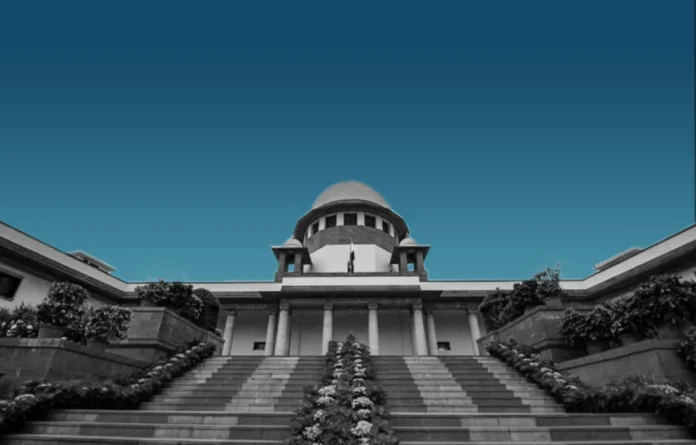The Supreme Court on Tuesday rejected a petition challenging the use of Urdu language on the nameboard of a municipal council in Maharashtra.
Dismissing the plea filed by former Patur Councillor Varshatai Sanjay Bagade, the Bench of Justice Sudhanshu Dhulia and Justice K Vinod Chandran observed that both Urdu and Marathi have been accorded the same language status under the Constitution.
The top court of the country blamed the colonial powers for associating Hindi with Hindus and Urdu with Muslims, lamenting that despite having Indian origin, Urdu came to be associated with Muslims, a pitiable digression from reality, from unity in diversity, and the concept of universal brotherhood.
It said the fusion of Hindi and Urdu met a roadblock in the form of puritans on both sides. While Hindi became more Sanskritized, Urdu became more Persian. A schism was exploited by the colonial powers in dividing the two languages on religion.
Urdu, which found its roots in India, could not be tied to any particular religion. The prejudice against Urdu stemmed from the misconception that Urdu is alien to India. This was an incorrect opinion as Urdu was also an Indo-Aryan language, much like Hindi and Marathi.
Urdu developed and flourished in India due to the need for people belonging to different cultural milieus who wanted to exchange ideas and communicate amongst themselves.
Over the centuries, it attained ever greater refinement and became the language of choice for many acclaimed poets, added the bench.
Bagade moved the Court claiming that the use of Urdu was impermissible under the Maharashtra Local Authorities (Official Languages) Act, 2022.
The Apex Court held that there was no legal bar on using Urdu in addition to Marathi, noting that the plea itself was based on a flawed understanding of language and law.
It said there was no prohibition on the use of Urdu under the 2022 Act or in any provision of law. Marathi and Urdu occupied the same position under Schedule VIII of the Constitution of India.
The Municipal Council had rejected Bagade’s plea in 2020, pointing out that Urdu had been used since 1956 and was widely understood by the local population.
The Bombay High Court also rejected her petition in 2021, after which she moved the Apex Court.
The top court of the country found that the Municipal Council had long used Urdu for local signage boards. The challenge was filed by a councillor and not by the Chief Officer, who alone was legally empowered to object under the Maharashtra Municipal Councils Act, it noted.
The Bench said the signage in Urdu was a matter of accessibility and public communication, not politics or religion.
It recorded in its order that language was a medium for exchange of ideas that brought people holding diverse views and beliefs closer. It should not become a cause of their division. If people or a group of people residing within the area covered by the Municipal Council were familiar with Urdu, then there should not be any objection if Urdu was used in addition to the official language – Marathi, at least on the signboard of the Municipal Council.
Responding to the broader argument that Urdu was a religious or foreign language, the Court observed that Urdu had its roots in India.
A language did not represent religion; instead, it representing culture, belonging to a community, region or people. A language was the yardstick to measure the civilizational march of a community and its people, noted the Court.
Terming Urdu as the finest specimen of ganga-jamuni tahzeeb or the Hindustani tahzeeb, the Bench said it displayed the composite cultural ethos of the plains of northern and central India. Before language became a tool for learning, its earliest and primary purpose was always communication, observed the Apex Court.
The Bench also highlighted how deeply Urdu was embedded in the Indian legal landscape and courts, stating that Urdu words have a heavy influence on Court parlance, both in criminal and civil law. From Adalat to halafnama to peshi, the influence of Urdu was writ large in the language of the Indian Courts.
The Bench ruled that the presence of Urdu alongside Marathi on the signboard did not violate any statutory or constitutional provision. It reiterated the need to confront and reassess personal misconceptions or prejudices against languages through an honest engagement with the linguistic diversity of India.


